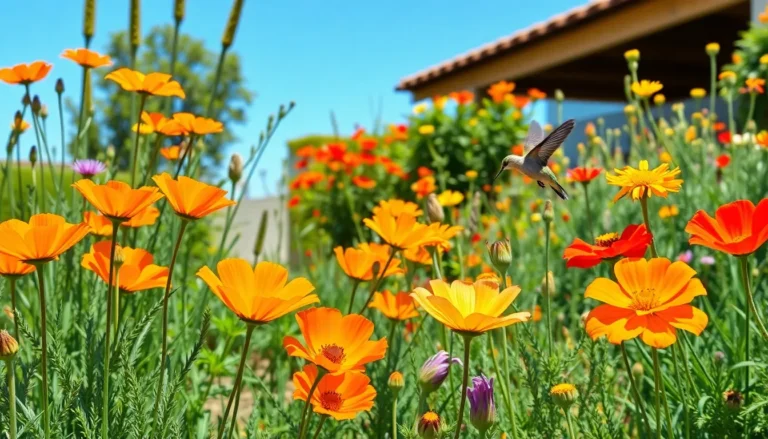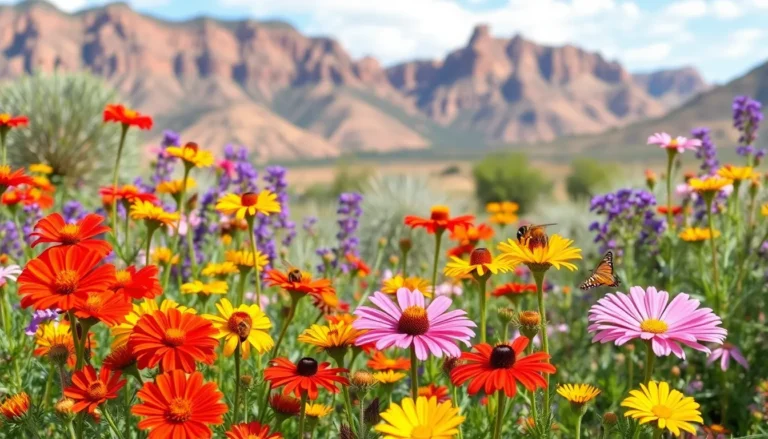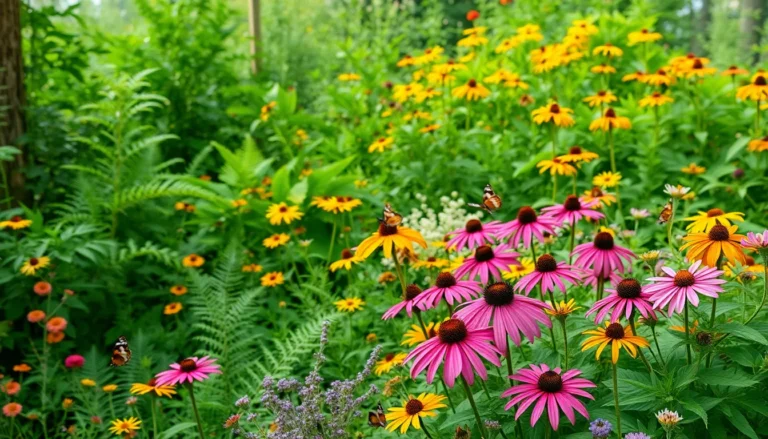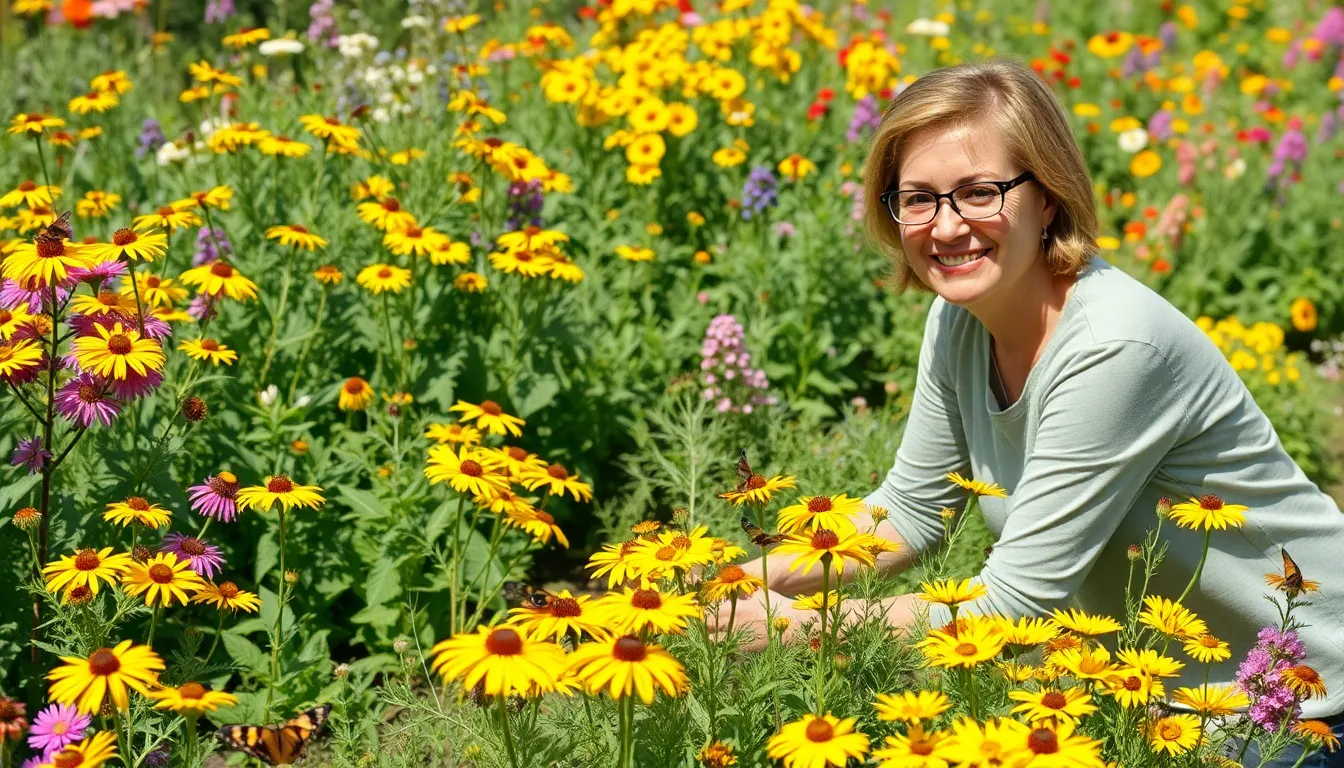
Pennsylvania Native Plants: Transform Your Garden While Supporting Local Ecosystems
In the heart of Pennsylvania, nature has crafted a stunning palette of native plants that deserve a spotlight. These green wonders not only add beauty to the landscape but also play a crucial role in supporting local ecosystems. Imagine walking through a garden where every bloom is a local celebrity, attracting butterflies and bees like they’re at a red carpet event.
Choosing native plants isn’t just a trend; it’s a smart move for anyone looking to create a thriving garden. They’re low-maintenance, drought-resistant, and perfectly adapted to the local climate. Plus, they offer a unique charm that’ll make your neighbors green with envy. So, why not dive into the world of Pennsylvania native plants and discover how they can transform your outdoor space into a vibrant, eco-friendly haven?
Pennsylvania Native Plants
Pennsylvania boasts a diverse array of native plants that thrive in its varied landscapes. Local flora includes wildflowers, grasses, shrubs, and trees specifically adapted to the state’s climate and soil conditions. Species such as the Eastern Redbud and Black-eyed Susan contribute to vibrant gardens while enhancing biodiversity.
Adaptation to local environments makes native plants crucial for supporting ecosystems. These plants require less water and minimal maintenance, aligning well with sustainable gardening practices. Selecting native species, like the Butterfly Weed and Coneflower, can attract important pollinators, such as bees and butterflies.
Diversity among native plants extends across different regions in Pennsylvania. The Eastern Woodland region showcases species like the Sugar Maple, while the Piedmont area features the vibrant Purple Coneflower. Each region’s unique conditions foster distinct plant communities that contribute to local wildlife habitats.
By fostering these plants, gardeners promote a dynamic ecosystem. Native plants not only provide beautiful landscapes but also enhance soil health and water conservation. Ensuring a thriving environment for local wildlife becomes more achievable when utilizing these species.
With resources like the Pennsylvania Native Plant Society, individuals can learn more about selecting and caring for native plants. Engaging in local community initiatives also helps support native vegetation efforts. Exploring Pennsylvania’s rich plant heritage offers both aesthetic and ecological benefits.
Importance of Native Plants
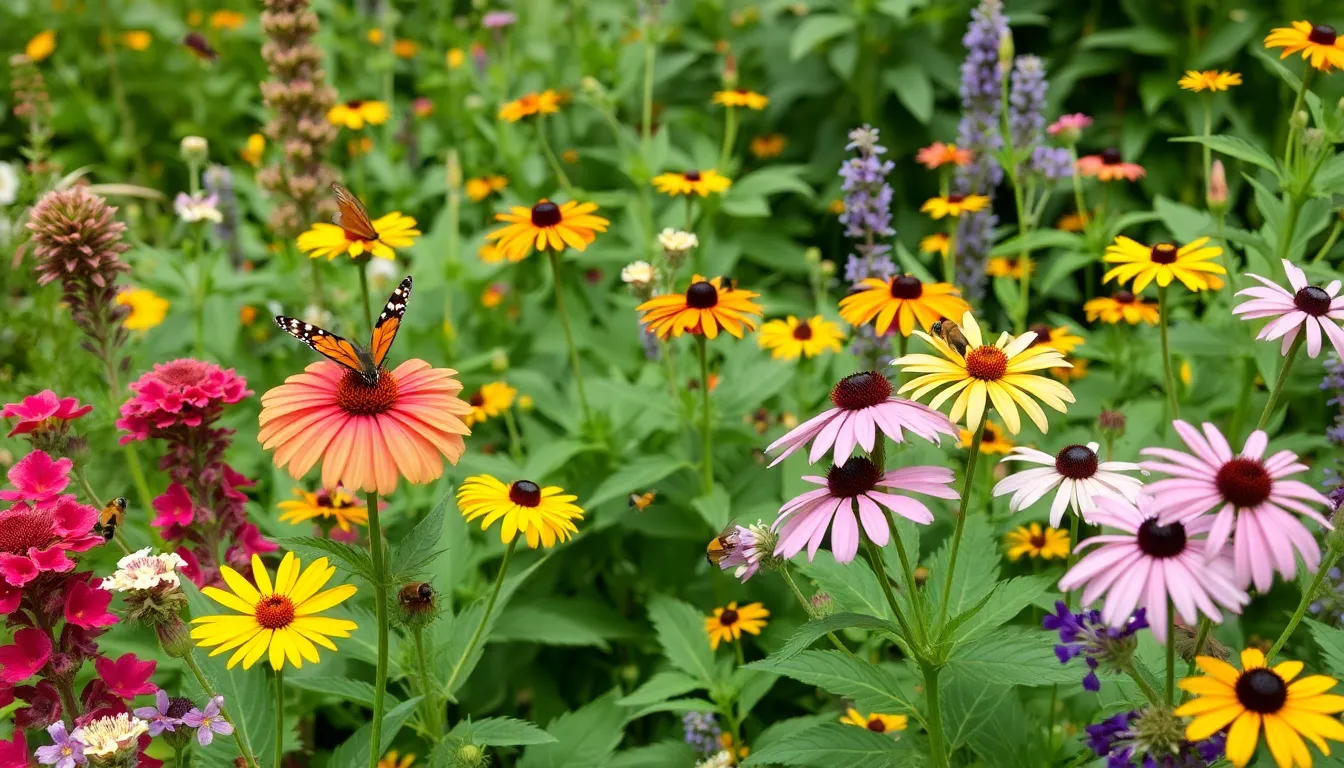
Native plants play a crucial role in preserving Pennsylvania’s ecosystems. They offer numerous benefits that enhance both environmental health and biodiversity.
Environmental Benefits
Native plants improve soil quality by preventing erosion and enhancing nutrient content. They require less water compared to non-native species, supporting water conservation efforts. Many native species are drought-resistant and thrive in local climates without extensive care. Reduced need for chemical fertilizers results in healthier surrounding watersheds. In urban settings, native vegetation contributes to better air quality and helps mitigate heat islands, benefiting communities.
Ecological Significance
Ecosystems thrive with the presence of native plants, as they support a variety of wildlife. Pollinators such as bees and butterflies depend on local flora for sustenance. Birds often rely on native shrubs and trees for nesting and food. Through these interactions, native plants sustain food webs and promote biodiversity. Species like the Eastern Redbud and Black-eyed Susan offer vital resources, facilitating a balanced ecosystem. Adopting native gardening practices fosters a resilient environment that contributes to long-term ecological stability.
Popular Pennsylvania Native Plants
Pennsylvania features a variety of stunning native plants suitable for diverse landscapes. These species thrive in local environments, promoting sustainability and ecological balance.
Trees and Shrubs
Eastern Redbud, known for its striking pink blooms, flourishes across many regions. Sugar Maple stands out for its impressive fall foliage and valuable sap production. American Holly offers year-round beauty with its evergreen leaves and bright red berries. Dogwood trees display delicate flowers in spring, attracting pollinators. Red Maple adapts well to various soil types, enhancing local habitats. Each of these trees and shrubs contributes uniquely to supporting wildlife and improving urban ecosystems.
Wildflowers and Grasses
Black-eyed Susan features iconic yellow petals and draws in butterflies and bees. Purple Coneflower, a favorite among pollinators, thrives in sunny locations. Wild Bergamot, with its aromatic foliage, plays a role in attracting essential insects. Pennsylvania Sedge serves as an excellent groundcover, preventing soil erosion. These resilient wildflowers and grasses not only beautify gardens but also support biodiversity within their native ecosystems. Each species enhances soil health and conserves water, demonstrating the importance of incorporating native flora into landscapes.
How to Incorporate Native Plants in Your Garden
Incorporating native plants into a garden creates a vibrant and supportive ecosystem. This section covers essential tips for planting and best practices for maintaining your native garden.
Tips for Planting
Select the right native plants for specific locations within the garden. Consider sunlight and soil type when making choices. Prepare the soil by removing weeds and adding organic matter to enhance fertility. Plant during the spring or fall for optimal growth. Ensure proper spacing to allow plants to thrive without overcrowding. Water newly planted species until established, promoting healthy root development.
Best Practices for Maintenance
Monitor moisture levels regularly to ensure plants receive adequate hydration. Mulch around plants retains soil moisture and suppresses weeds. Prune dead or damaged growth to encourage new growth and maintain aesthetics. Fertilization generally isn’t necessary as native plants adapt well to local soil conditions. Observe for pests and diseases promptly, applying organic treatments when needed. Allow plants to reseed naturally for a self-sustaining garden that flourishes over time.
Resources for Pennsylvania Native Plants
Numerous resources exist for those interested in Pennsylvania native plants. The Pennsylvania Native Plant Society offers comprehensive information on local flora, with guides and publications highlighting native species. Additionally, local horticultural organizations provide workshops and educational programs, fostering community engagement.
Online platforms like the Penn State Extension provide research-based information on native plants. Their resources include planting guides, maintenance tips, and ecological benefits associated with native gardening.
Books dedicated to Pennsylvania’s native plants present valuable insights as well. “Native Plants of Pennsylvania” by Donald J. Leopold stands out, detailing species and their habitats, while “Bringing Nature Home” by Douglas W. Tallamy emphasizes the ecological importance of native plant gardening.
Gardening centers and nurseries specializing in native plants supply a wide range of local species. Many of these places offer knowledgeable staff who assist with plant selections based on local conditions.
For obtaining native seeds, organizations such as the Ernst Conservation Seeds sell a variety of options, contributing to local habitat restoration efforts. Local seed swaps also provide great opportunities for gardeners to exchange native plant seeds.
Furthermore, social media groups focused on native plants encourage sharing experiences and gaining tips from fellow enthusiasts. Events like native plant sales or garden tours showcase successful native gardening practices while connecting with like-minded individuals.
These resources, combined with community engagement, help foster a deeper understanding of Pennsylvania’s native plants and their ecological significance. Utilizing these tools enriches the gardening experience while promoting biodiversity and ecosystem health in Pennsylvania.
Conclusion
Embracing Pennsylvania’s native plants offers numerous benefits for both gardens and local ecosystems. These plants not only enhance beauty but also foster biodiversity and support vital wildlife. By choosing native species, gardeners can create sustainable landscapes that thrive with minimal maintenance.
The resources available for those interested in native gardening make it easier than ever to get started. Engaging with local organizations and communities can provide invaluable support and knowledge.
Ultimately, cultivating native plants is a rewarding endeavor that contributes to a healthier environment and a more vibrant community.

